21/05/2018
Beautiful world
Quote of the message Madeleine_de_Roben
Read the fullV your quote or community!
Beautiful world
This wonderful and wonderful world
A series of photos from the new book by the publishing house Lonely Planet called "Beautiful W Martial Raysse art paintings for sale
orld", where the pictures of the most beautiful and fascinating places on our planet are collected.
Towering above the rocks, yellow pines can be seen in the Bryce Canyon National Park of Utah (USA). Clefts in the rocks are formed when the water freezes and expands, gradually splitting the stone.
Thousands of lanterns rise into the night sky during the Thai festival of Loi Kratong, which takes place every year in November, during the full moon.
Panoramic view of the London parliament building, Big Ben and Westminster Bridge, shot at dusk from the Thames waterfront.
Night New York, view from the Empire State Building.
Hummingbird is enjoying nectar of white flowers in Huntington Beach, California.
Polar lights, photographed in the early morning in the Arctic Circle. A tremendous glow is created by the interaction of charged particles moving quickly from the Sun and the magnetic fields of the Earth.
Dolomites of Italy are among the most impressive mountain landscapes on the planet.
"Towers" of sandstone can be seen on the border of the US states of Arizona and Utah. They were formed as a result of millions of years of erosion. A red shade of the stone gives iron oxide.
Annual migration of sardines in South Africa. Millions of fish are heading north.
View of the waterfalls of the national park of Croatia Plitvice lakes. The park consists of a cascade of lakes, the water in which differs in color - from blue and green to gray.
"Wave" - formation of sandstone on the border of Arizona and Utah. A whimsical game of shapes and colors is the result of erosion work.
These stone towers can be seen in the Chinese national park Zhangjiajie. They also formed as a result of millions of years of erosion.
Geyser Strokkur is located in Iceland. It erupts every 2-6 minutes, releasing water to a height of up to 20 meters.
The Chinese Li River is famous for its crenellated limestone peaks, rugged streams, water buffalo and cormorants.
Chinese rice fields-terraces. These man-made structures make it possible to collect the largest possible rice harvest in the mountainous regions of the country.
©
©
03:45 | Lien permanent | Commentaires (0)
22/04/2018
DISSIDENTS: As Alexander Ginzburg married Arisha ...
The KGB arrested Alexander Ginzburg five days before his wedding with Arina. Well, purely to make a person pleasant, - taking into account that the wife, according to the law, has the right to a date, and the bride is nobody.
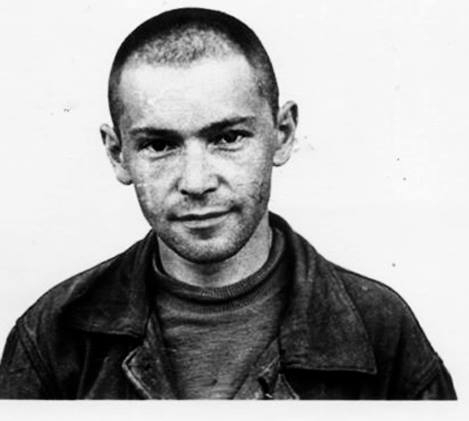
Alexander Ginzburg
The bride was expelled from the Moscow State University, where she taught, and Ginzburg was sent to Mordovia, to Potma, to the notorious 17th camp and two years refused to register them as husband and wife.
Soviet power knew how to be principled. Lawlessness is so lawlessness!
But the political zone also knew how to be principled and the prisoners joined the hunger strike, which Ginzburg announced.
Julius Daniel then wrote:
"It is certainly more expensive than Paris,
The solution of the comparison is clear and simple:
He is worth a mass, and our Arisha
Great is fasting. "
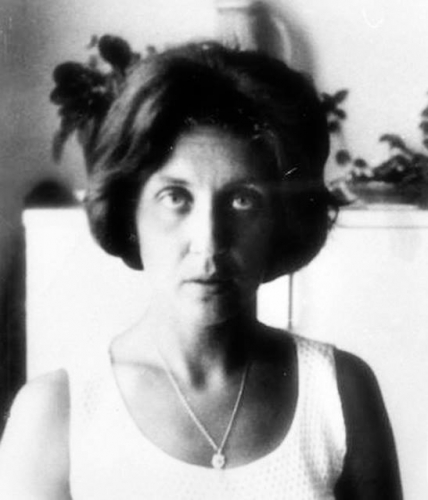
Arina Ginzburg
For his right to marry his Arina, Ukrainian and Lithuanian nationalists, Marxists and monarchists, including the brother-liberal, went hungry and went to concrete bags of penalty isolators.
It lasted twenty-seven days and ... the power retreated.
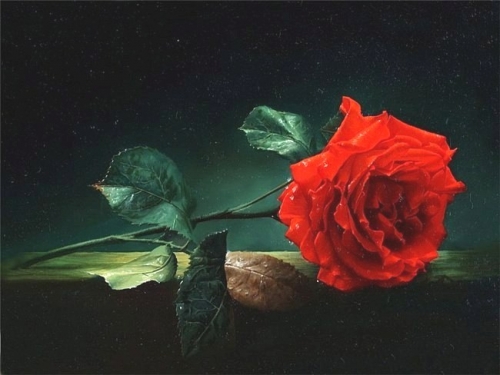

02:21 | Lien permanent | Commentaires (0)
10/04/2018
Leonardo da Vinci.
Painting in detail:
Leonardo da Vinci.
The Annunciation, 1475
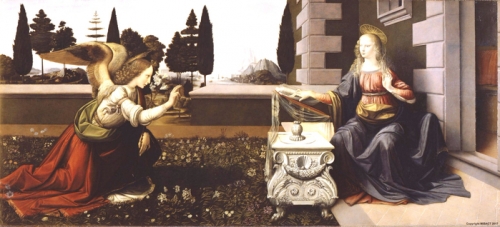
Leonardo da Vinci. The Annunciation, 1475
The paintings of Leonardo da Vinci have for several centuries with enviable regularity become the subject of controversy among scientists from various fields, art critics and art historians. In the case of the painter's works, the author was most often called into question: since Leonardo did not sign his works, one can focus only on his personal diaries with sketches and the testimonies of his contemporaries. As for the Da Vinci "Annunciation" picture, the researchers did not reach a consensus: some argue that the work was written by Leonardo himself from the first to the last smear, while others are sure that the artist had a co-author. After numerous studies, details were found that can confirm both the first and second versions.
Who could be the co-author of the Annunciation?
The work was discovered only in 1867 in the monastery of San Bartolomeo and Montoliveto and transported to the Uffizi Gallery. At that time, its author was considered Domenico Ghirlandaio, but two years later the picture was attributed to Leonardo due to the study of the diaries of the artist and comparison of the details of the Annunciation with sketches.
In favor of the version that the painting was written by Da Vinci on its own, there is a scrupulously prescribed, hazy landscape in the background and anatomical precision, which is traditional for the artist. For example, the wings of Gabriel Leonardo copied from real bird wings, he writes about this in one of his diaries. However, some unidentified "retoucher", apparently, found these wings are not impressive enough for God's messenger and rather roughly lengthened them. It is worth paying attention to the faces of the heroes of the picture. The face of the archangel Gabriel is similar to the angel that da Vinci wrote in the corner of the "Baptism of Christ" - the work of his teacher Verrocchio, and the face of the Virgin Mary - to the famous "Madonna with a carnation," written by Da Vinci a few years later.
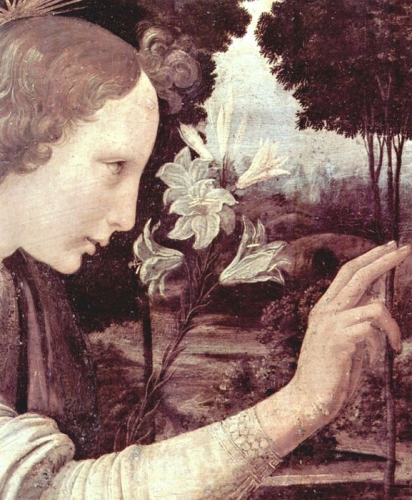
However, some researchers hold the opinion that the "Annunciation" was written by Leonardo along with his teacher. They believe that, like the "Baptism of Christ", most of the picture was created by Andrea del Verocchio, and the young master was instructed to write a landscape in the background and the figure of the archangel. One of the radiographic studies showed that some of the work, supposedly done by Verrocchio, was written with fairly large, heavy strokes, and the colors used by it contained lead. As for the angel and the landscape, here the layers of the paint are more subtle, the smears very light, made with lead-free paints. The folds of Maria's clothes look traditionally for Verocchio's heavy and motionless, as if hewed out of stone. Another of the arguments of the supporters of the theory of co-authorship is the sarcophagus standing between Maria and the archangel. This is a copy of the sarcophagus of Piero de 'Medici in the church of San Lorenzo, made by Andrea Verocchio. However, it is possible that the sarcophagus was portrayed by Leonardo himself, as a tribute to the teacher.

There is another version of the Annunciation, written several years later and kept in the Louvre, which is currently considered the work of Leonardo. However, this picture is much more controversial. Many researchers are inclined to consider it the author of Lorenzo di Credit. Documentary evidence has been preserved that this small panel with a biblical scene was part of the altar of Pistoia Cathedral. Most of the work was done by Verrocchio, and he commissioned the "Annunciation" di Credit, to one of his students. Leonardo's paintings were repeatedly attributed to Di Credit, as well as vice versa, as they studied and worked with Verocchio at one time. Anyway, now the author of the Louvre "Annunciation" is recognized as Da Vinci.
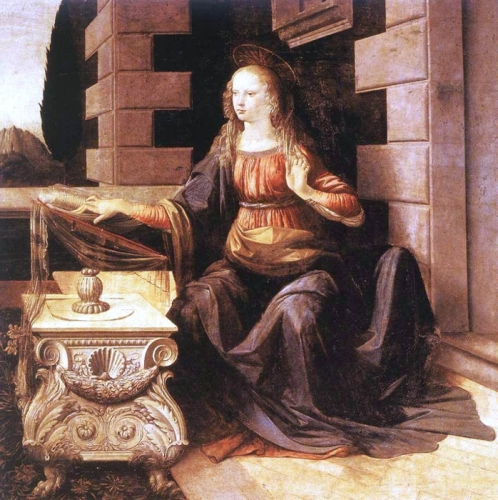
Leonardo da Vinci. "Annunciation", 1475 (fragment)
The Annunciation in Painting
Icon-painting and pictorial traditions of the image of the Annunciation were formed almost from the very beginning of the existence of Christianity. One of the earliest works that captured this famous biblical scene is a fresco from the Roman catacomb of Priscilla of the 3rd century. For the most part, the canons and rules here have developed over many centuries before the appearance of Leonardo da Vinci. At the time of writing "Annunciation" artist was only about 20 years old, he has not become famous as an experimenter and innovator, and here, too, did not go against the traditions.
Approximately in the V century, the canon was formed, according to which Mary was depicted on the right side of the canvas, and the archangel Gabriel in the left. The details depended, for the most part, on what text with the description of the scene of the Annunciation was taken as the basis for this or that artist. For example, in the Gospel of Luke, the meeting of Mary with the angel who brought the Good News is described rather briefly and sparingly. In this case, there are many apocryphal ones
03:05 | Lien permanent | Commentaires (0)


